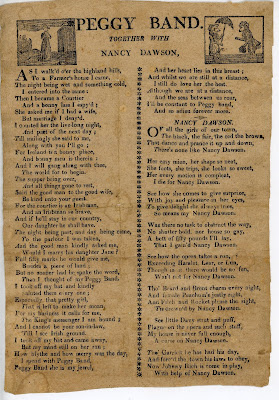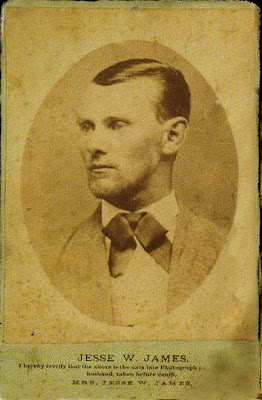
America’s Social Bandits in Fact and Fiction
By E.M. Sanchez-Saavedra
PART II: THE FICTIONAL JAMES BOYS
Thanks to John Newman Edwards whose dispatches and later book, Noted Guerrillas, provided a plethora of mixed fact and fiction about Frank and Jesse James, New York-based dime novel publishers saw an opportunity to supply their readers with fresh reading matter about home grown American outlaws. A Missouri-born lawyer, novelist and historian, John Roy Musick, is credited with producing the first dime novel about the notorious brothers, The Train Robbers; or, A Story of the James Boys (Wide Awake Library, No. 440.) Publisher Frank Tousey, formerly a partner of Norman L. Munro, soon turned the “James Boys” into a minor industry, publishing dozens of yarns in his large format story papers, such as Young Men of America, and five-cent pamphlets, notably The Five Cent Wide Awake Library, The Boys of New York Pocket Library and later in the New York Detective Library. The stories were written by Musick and Francis W. Doughty under the house name “D.W. Stevens.” The Wide Awake Library was unique in publishing three special numbers containing reasonably factual material, including a transcript of Frank James’ trial. Tousey soon ran afoul of the New York Society for the Prevention of Vice and its bully-boy enforcer, Anthony Comstock. Comstock, who had begun his personal anti-smut campaign during his military service in the Civil War, convinced the YMCA to back his efforts to wipe out pornography and indecent literature through pressure on the Post Office. Publishers who lost their bulk mailing privileges faced bankruptcy. Independent Postal Inspector Comstock successfully prosecuted and jailed several hapless publishers and distributors.

Frank Tousey’s highwayman and outlaw publications became Comstock’s target and Tousey was forced to suppress many numbers of the Wide Awake Library. To preserve the numbering scheme, inoffensive titles were inserted into the series. The Train Robbers was replaced by Cavalry Jack at Corinth. Young Lynx the Amateur Detective filled the slot formerly occupied by The James Boys in Minnesota. Some 66 titles were suppressed, including all the English highwayman reprints and seventeen James Boys stories, plus a True Life of Billy the Kid and a couple of miscellaneous tales. Undaunted, Tousey soon realized that Comstock and his assistants only checked titles for “red-flag” words like “crime” or “bandit,” so he cautiously began slipping James Boys stories into the back pages of straight detective and adventure stories. The ruse worked and he grew bolder. By the 1890s, the brothers were back on the covers of the New York Detective Library. The final two mastheads for the series reflected the emphasis on James Boys stories. After Tousey converted all his nickel weeklies to colored cover formats, he launched the James Boys Weekly, which ran for 139 numbers from 1900 to 1903.

In addition to stories which featured the outlaws as protagonists, Tousey’s writers managed to work them into novels starring fictional detectives Old King Brady and Young Sleuth and inventors Frank Reade, Jr. and Jack Wright (who pursued the gang with a “steam team” and an “electric stage,” respectively.) Many of the James Boys novels starred the indestructible detective Carl Greene who single-mindedly pursued them from novel to novel. Of course Tousey also issued many novels about fictional but alliteratively-named western desperados such as “Denver Dan” and “Dandy Dan of Deadwood.”

Beadle and Adams, the firm which originated the dime novel, had qualms about portraying living outlaws as heroes or anti-heroes, although they would make an exception for Joaquin Murieta, a shadowy Mexican bandit of the 1850s. As a substitute they issued reams of stories about fictional characters like “Deadwood Dick,” “Captain Dick Talbot” and scores of other wholly fictitious western banditti. Their rivals had no such scruples. Publisher John W. Morrison issued 58 numbers of Morrison’s Sensational Series between 1881 and 1882, including The James “Boys,” Jesse James and His Pals, Frank James on the Trail and Jesse James’ Last Shot. Morrison also published several novels starring Billy the Kid.

To cash in on the phenomenon, Norman L. Munro had a number of detective stories rewritten to include the James Boys in his Old Cap. Collier Library. An example is No. 128, Frank James Alarmed. Number 388 dealt with another real-life outlaw, train robber Rube Burrows (1854-1890.) The Old Cap. Collier Library was unusual in that many of its stories were based on actual criminal cases, although fictionalized beyond recognition. In a later issue, Old Cap. Collier solved the sinking of the U.S.S. Maine while the actual investigation was underway.

In 1882, Street and Smith printed Jesse the Outlaw. A Narrative of the James Boys, and later added some James gang novels to their successful Log Cabin Library. Cole Younger’s cousins, the Dalton Gang, also appeared in this publication. (The Daltons came to grief in Coffeyville, Kansas, in 1892, in an eerie recapitulation of the Northfield fiasco.) Like Tousey, Street and Smith launched a colored cover weekly, the Jesse James Stories. These ran from 1901 to 1903 for 123 issues. (Volume 1, no. 1 was reissued in 1938 for the premiere of a feature film about Jesse, starring Tyrone Power.) The outlaw stories were credited to “W.B. Lawson,” a house name shared by at least a dozen authors. This series and Tousey’s both succumbed to critics who objected to the ambivalent view of crime presented by the novels.

Five years later, however, the Arthur Westbrook Company began issuing the Adventure Series, which ran from 1908 to 1910, and contained 35 Jesse James tales. Throughout the twentieth century, the James brothers have appeared in novels, pulps and comics, some serious, but most wildly imaginative.

When dealing with a historical figure whose basic biographical outline is generally familiar, even the most reckless fictioneer needs to conform to certain fixed points in his outline. Calling his wife and mother by any other name but Zerelda, or denying his quasi-military service, or describing him as standing six feet five inches would be pointless. On the other hand, the penny-a-liners were free to transport their fictional Jesse to exotic places where he had implausible adventures. Some stories depicted him as a psychopathic murderer, some as a wronged man crying for vengeance and most as an ambivalent adventurer, who could be heroic or vicious as the need arose. Americans love law and order, yet have a sneaking admiration for those who flout authority. Melodramas are generally propelled by the villain. Good may prevail in the end, but a really vile scoundrel is something to be savored as a guilty pleasure.

Since the demise of the dime novel, Jesse James has been portrayed countless times on stage, in the movies and on television by such Hollywood luminaries as Roy Rogers, Robert Duvall, Stacy Keach, Brad Pitt and many others.

Like the horror comics of the 1950s, stories of the James Boys had a subversive underground quality. The copies that were not traded and read to shreds were often destroyed by parents, clergymen and Anthony Comstock. And, like the horror comics, their illicit contraband nature and low survival rate has endeared them to collectors.

Fittingly, in the late 1920s, James R. “Jim” Cummins (a.k.a. “Windy Jim,” 1847-1929,) sole survivor of the gang, became a member of the Happy Hours Brotherhood, the fraternity of enthusiasts whose fanzine is the still robust Dime Novel Round-Up. Cummins had starred in Tousey’s New York Detective Library No. 698, Jim Cummins and the Detectives; or, Wild Adventures on the Missouri by “D.W. Stevens” (1896). In 1903 he wrote his memoirs, a curious mix of half-remembered facts and self-protective accusations. Many of his assertions came to life on the big screen a century later in the brilliant atmospheric film The Assassination of Jesse James by the Coward Robert Ford.
Convicted of murder but pardoned by Governor Crittenden, Bob and Charley Ford moved East, where they reenacted the assassination on stage for hundreds of performances in sleazy theatres. Charles Wilson Ford, tubercular and depressed, committed suicide at his father’s home in 1884. Robert Newton Ford drifted to Creede, Colorado where he was himself assassinated by a nobody named Ed O’Kelley in 1892.

Bob Younger died in Minnesota’s Stillwater Penitentiary. Jim Younger committed suicide soon after his release. Cole Younger served his full 25-year sentence, eventually writing his autobiography and lecturing on “What Life has Taught Me.” (In other words, he made a fair living from preaching that “crime does not pay.”) He and Frank James toured briefly with a Wild West Show, but gave up after being swindled by their manager. Both men would die in bed of natural causes, a rarity among their set.
Towards the end of his life, Frank James had become deeply conflicted about his past. Always a philosophical person, he publicly repudiated the outlaw legend, (while continuing to profit from it.) He carried on a tidy little business giving guided tours of the Zerelda James home and selling tons of souvenir rusty horseshoes “from Jesse’s horse” and bushels of pebbles “from Jesse’s grave.” He never failed to speak out against the glamorization of crime on stage and in popular fiction.
“The dad-binged play glorifies these outlaws and makes heroes of them. That’s the main thing I object to. It’s injurious to the youth of the country. It’s positively harmful. I am told the Gillis Theatre was packed to the doors last night, and that most of those were boys and men. What will be the effect upon these young men to see the acts of a train robber glorified?” -- Frank James, Kansas City Star, 10 Feb 1902, quoted in Jesse James was his Name, William A. Settle Jr., University of Missouri Press, 1966.






























































